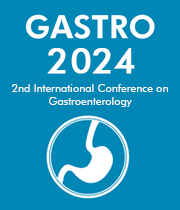Title : Steatosis, even In type 1 diabetes mellitus
Abstract:
Metabolic Associated Fatty Liver Disease(MASLD) comprises hepatic steatosis without injury to steatosis, inflammation, hepatocyte injury with or without fibrosis. Nearly one fourth of the people with Type 1 Diabetes Mellitus (T1 DM) are estimated to be having MASLD (27.7%). These patients are more prone to develop CVD and have 2-3 times higher risk of microvascular complications. Fibrosis is a marker for developing complications and is the most important histological parameter for all cause and liver related mortality, and therefore should be assessed to determine NAFLD prognosis. Many scoring systems of fibrosis which include the AST/ALT ratio, NAFLD fibrosis score (NFS), the AST/platelet ratio index (APRI), and the FIB-4 score have demonstrated utility in the detection of advanced fibrosis, a group potentially more likely to benefit from therapeutic interventions. Transient elastography (TE) performed using Fibro scan is a rapid, non-invasive test, to detect steatosis and liver stiffness with excellent accuracy. There is very scant data on the emerging pharmacotherapies available for the same. Due to the limited and inconsistent information on the prevalance, pathophysiology, noninvasive markers for diagnosis and the emerging treatment modalities of T1DM and MASLD, the review focuses on the sam.
Audience Take Away:
-
By knowing the burden of MASLD in T1DM, effective screening strategies may be employed
-
Different tools can be utilized at the community level to screen for MASLD in T1DM
-
This research can be utilized by other faculty to know the factors contributing for the development of MASLD in T1DM and necessary actions can be taken for the same.



